How To Enable Port In Windows Server 2008 R2
In all Windows operating systems, the default port assigned to RDP (Remote Desktop Protocol) is TCP 3389. Afterward you lot enable RDP in Windows, the TermService (Remote Desktop Services) starts listening on port 3389. In this article, nosotros'll prove y'all how to change the default RDP port number on the desktop editions of Windows (7/eight/10/11) and on Windows Server using the Registry Editor and PowerShell.
Notation that modern versions of Windows also utilise UDP with the same port number (3389) for Remote Desktop connections in addition to TCP.

You can change the default RDP port number in Windows from 3389 to any other. This is most ofttimes used when you need to hide your RDP/RDS host from port scanners that look for Windows hosts on the network with an open RDP port TCP/3389.
Changing the RDP port will reduce the chances of exploiting RDP vulnerabilities (the last critical vulnerability in RDP BlueKeep is described in CVE-2019-0708), reduce the number of RDP brute force attacks (don't forget to regularly analyze RDP connexion logs), SYN, and other types of attacks when NLA is disabled. Virtually ofttimes, the RDP port is inverse on computers with a direct connection to the Internet (VPS/ VDS), or in networks where the edge router forwards port 3389/RDP to a Windows host in your LAN.
Despite changing the port number, information technology is unsecure to open the RDP port on your host to the Internet. Port scanners allow an attacker to discover the RDP listener on a new port (by signature). If you lot want to open RDP admission to a estimator on your network, it is better to employ VPN, RD Web Access, RDS Gateway, and other secure connection tools.
When choosing a not-standard RDP port, please annotation that it is not recommended to utilize ports in the range 1-1023 (known ports). Use a dynamic port in the RPC port range (49152 to 65535), or any port in the range 1024 to 49151 that is not in use by another service or application.
Contents:
- How to Modify the Remote Desktop Port on Windows?
- Modify RDP Listening Port Number with PowerShell
How to Change the Remote Desktop Port on Windows?
In our example, we will alter the port number on which the Remote Desktop service is listening to 1350. To practice this:
- Open the Registry Editor (
regedit.exe) and go to the registry key HKEY_LOCAL_MACHINE\Organisation\CurrentControlSet\Control\Terminal Server\WinStations\RDP-Tcp; - Discover the DWORD parameter with the name PortNumber. This parameter shows the port, on which the Remote Desktop service is listening. The default is 3389 (decimal);
- Alter the value of this parameter. I have changed the RDP port to 1350 (Decimal);
You tin change the registry parameter using PowerShell:
Set-ItemProperty -Path "HKLM:\Organisation\CurrentControlSet\Control\Terminal Server\WinStations\RDP-Tcp\" -Name PortNumber -Value 1350 - If Windows Firewall is enabled on your estimator, you will have to create a new dominion that allows entering connectedness to your new RDP port. If yous are reconfiguring a remote Windows host via RDP, make sure y'all create allow rules in the firewall before restarting TermService, otherwise, you will lose access to the server;
- Yous can create an allowing inbound dominion for your new TCP/UDP RDP port manually in the Windows Defender Firewall console (
firewall.cpl) or using PowerShell cmdlets from the NetSecurity module:New-NetFirewallRule -DisplayName "NewRDPPort-TCP-In" -Direction Inbound -LocalPort 1350 -Protocol TCP -Action allow
New-NetFirewallRule -DisplayName "NewRDPPort-UDP-In" -Management Inbound -LocalPort 1350 -Protocol UDP -Action allow - Reboot your computer or restart your Remote Desktop service with this command:
net stop termservice & cyberspace start termservice - To connect to this Windows host via Remote Desktop, you have to specify the new RDP connexion port in your mstsc.exe client using the colon as follows:
RDPComputerName:1350or past IP address:192.168.1.10:1350or from the command prompt:mstsc.exe /v 192.168.1.ten:1350If you are using RDCMan to manage multiple RDP connections, yous tin can specify the RDP port you take configured in the Connection Settings tab.
- Then you will successfully connect to the remote desktop of a computer using the new RDP port. You lot tin use the
netstat –na | Detect "List"control to brand sure that your Remote Desktop Service is listening on a new port.
Note that the UDP RDP port number also automatically changed to 1350 (you can check this with the TCPView tool).

Use the Examination-NetConnection command to check that the default RDP port 3389 is at present closed (TcpTestSucceeded: Faux):
Test-NetConnection 192.168.3.102 -port 3389 |select TcpTestSucceeded
Now you lot need to use the new port 1350 for the RDP connection.
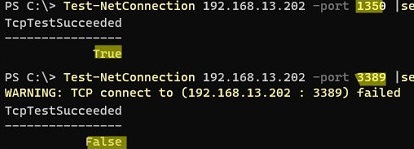
If y'all want to change the RDP port number on domain computers, you can utilise the Grouping Policy features. Create a new GPO that volition deploy the PortNumber registry parameter with the new RDP port number to domain computers.
Change RDP Listening Port Number with PowerShell
A complete PowerShell script to change the RDP port number, create the firewall rule, and restart the Remote Desktop service might expect similar this:
Write-host "Specify the number of your new RDP port: " -ForegroundColor Yellow -NoNewline;$RDPPort = Read-Host
Set-ItemProperty -Path "HKLM:\SYSTEM\CurrentControlSet\Command\Terminal Server\WinStations\RDP-TCP\" -Name PortNumber -Value $RDPPort
New-NetFirewallRule -DisplayName "NewRDPPort-TCP-In-$RDPPort" -Direction Entering –LocalPort $RDPPort -Protocol TCP -Activity Allow
New-NetFirewallRule -DisplayName "NewRDPPort-UDP-In-$RDPPort" -Direction Entering –LocalPort $RDPPort -Protocol UDP -Action Let
Restart-Service termservice -force
Write-host "The number of the RDP port has been changed to $RDPPort " -ForegroundColor Magenta
You can change the RDP port number on a remote computer. To do this, you demand to enable WinRM on the remote computer, and then you can use the Invoke-Command cmdlet to connect to the computer:
Invoke-Command -ComputerName wksname112 -ScriptBlock {Ready-ItemProperty -Path "HKLM:\SYSTEM\CurrentControlSet\Command\Terminal Server\WinStations\RDP-TCP\" -Proper name PortNumber -Value 1350}
If you need to alter the RDP number remotely on multiple computers in your AD domain (in the specific OU), use the following script (you can get a listing of computers in the OU using the Get-ADComputer cmdlet):
Write-host "Specify the number of your new RDP port: " -ForegroundColor Yellowish -NoNewline;$RDPPort = Read-Host
$PCs = Go-ADComputer -Filter * -SearchBase "CN=IT,CN=Computers,CN=NY,DC=woshub,DC=com"
Foreach ($PC in $PCs) {
Invoke-Command -ComputerName $PC.Proper noun -ScriptBlock {
param ($RDPPort)
Set-ItemProperty -Path "HKLM:\SYSTEM\CurrentControlSet\Control\Terminal Server\WinStations\RDP-TCP\" -Proper name PortNumber -Value $RDPPort
New-NetFirewallRule -DisplayName "NewRDPPort-TCP-In-$RDPPort" -Direction Inbound –LocalPort $RDPPort -Protocol TCP -Action Allow
New-NetFirewallRule -DisplayName "NewRDPPort-UDP-In-$RDPPort" -Management Inbound –LocalPort $RDPPort -Protocol TCP -Action Allow
Restart-Service termservice -force
}
This guide for changing the default RDP port is suitable for any Windows version starting from Windows XP (Windows Server 2003) and up to modernistic Windows 10, Windows 11, and Windows Server 2022 builds.
Source: http://woshub.com/change-rdp-port-3389-windows/
Posted by: croslandrappers.blogspot.com

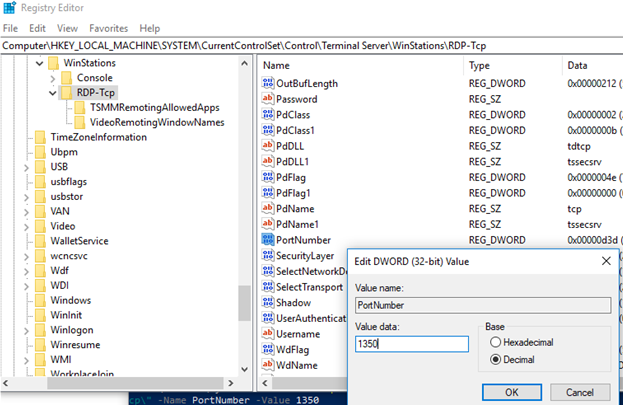
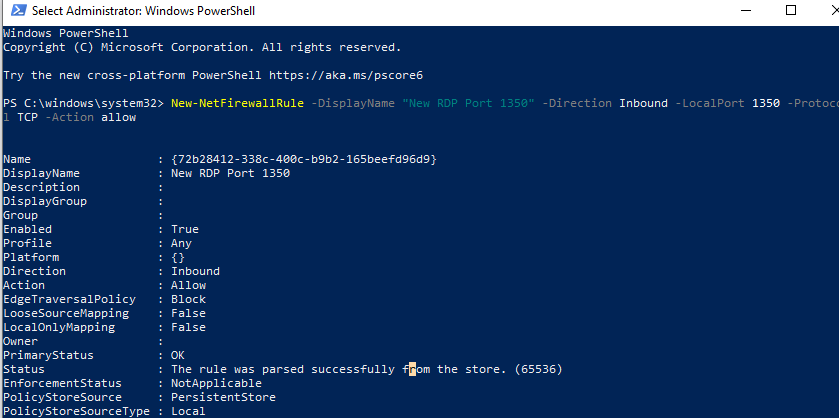

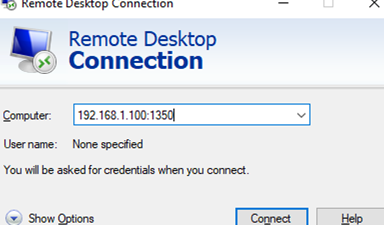
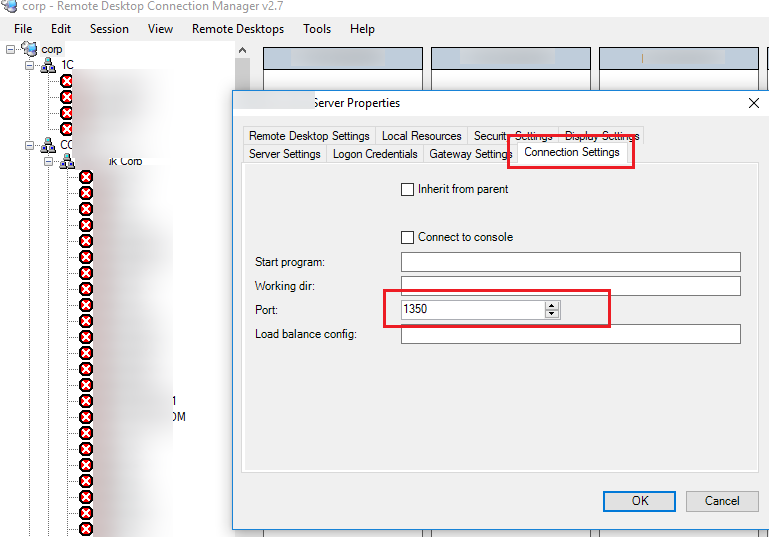

0 Response to "How To Enable Port In Windows Server 2008 R2"
Post a Comment